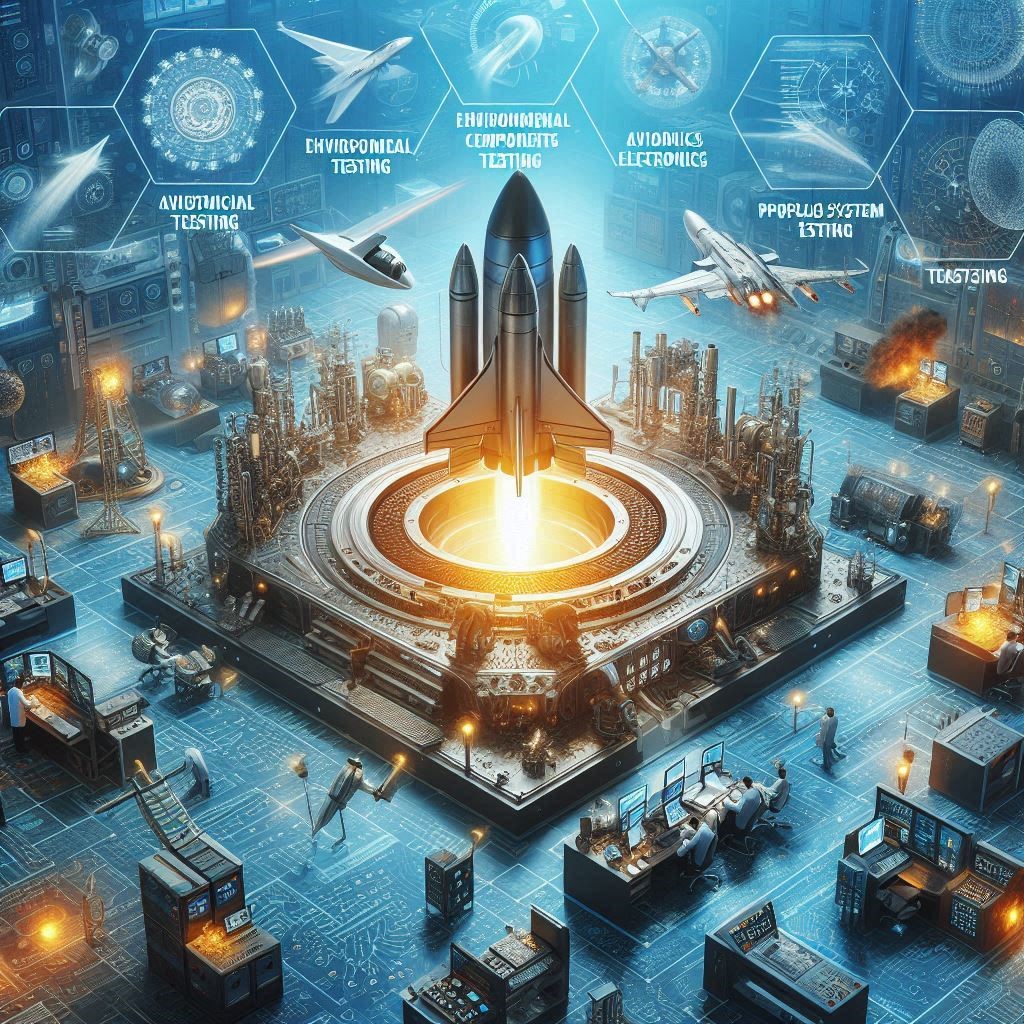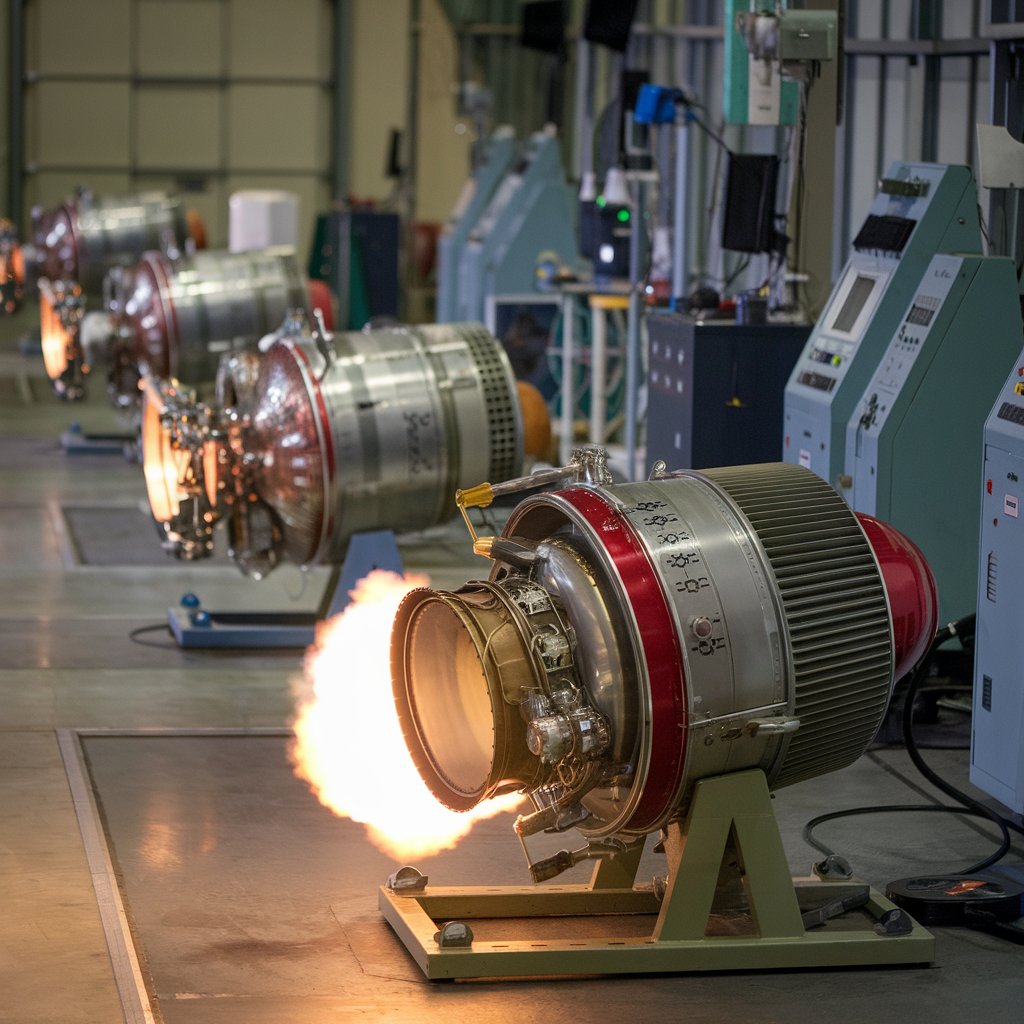The aerospace testing market growth is one of the most complex and technologically advanced sectors within the global industrial ecosystem. Its growth is not merely a function of increasing demand for aircraft and spacecraft but is also driven by the integration of cutting-edge technologies that make aerospace vehicles safer, more efficient, and more adaptable to emerging needs.

Technological Innovations Driving Growth
AI and Machine Learning Integration:
The aerospace industry is increasingly embracing artificial intelligence (AI) and machine learning (ML) in testing processes. AI-driven simulation tools are being used to predict how new aircraft designs will perform under different conditions without needing to build physical prototypes. Machine learning algorithms are used to analyze test data more efficiently, reducing human error and enhancing predictive accuracy. This technological evolution not only accelerates testing timelines but also improves safety by identifying potential failure points before they occur in real-world scenarios.
Non-Destructive Testing (NDT) Technologies:
Non-destructive testing is a critical part of the aerospace testing process, allowing manufacturers to test the structural integrity of materials without causing any damage. As materials like composites and advanced alloys become more common in aircraft and spacecraft, the demand for innovative NDT techniques is increasing. Technologies such as ultrasonic testing (UT), eddy current testing (ECT), and X-ray computed tomography (CT) are evolving, providing more precise, real-time results that ensure the safety and durability of these components.
Digital Twin Technology:
A digital twin is a virtual replica of an object or system that allows engineers to test and simulate different scenarios without affecting the real system. The aerospace industry has begun using digital twins to simulate the behavior of aircraft under various conditions. This has proven especially valuable for predicting system malfunctions, optimizing maintenance schedules, and enhancing fuel efficiency. The digital twin is not only an important tool for testing but also serves as a continuous source of data during the operational life of the vehicle, offering continuous insights for improvements.
Download PDF Brochure @ https://www.marketsandmarkets.com/pdfdownloadNew.asp?id=32924426
Additive Manufacturing (3D Printing) in Testing:
Additive manufacturing, or 3D printing, is increasingly being used to create custom test components and parts for aerospace testing. This technology allows for the production of complex geometries that would otherwise be impossible or cost-prohibitive to create with traditional manufacturing methods. The ability to quickly prototype and produce parts is reducing time-to-market for new aerospace technologies while also reducing the cost and time associated with testing.
Emerging Aerospace Applications and Their Testing Demands
Urban Air Mobility (UAM) and Electric Vertical Takeoff and Landing (eVTOL) Aircraft:
One of the most exciting areas in the aerospace sector is Urban Air Mobility (UAM). These aircraft, including electric vertical takeoff and landing (eVTOL) vehicles, aim to revolutionize urban transport by providing faster, more sustainable solutions for short-distance travel. Testing in this field requires a mix of aerodynamics, structural integrity, power systems, and, notably, noise and environmental impact assessments. Due to the early-stage nature of UAM, the testing market will see increased demand for specialized testing solutions, particularly for safety and regulatory compliance.
Space Exploration and Satellite Testing:
With the space sector expanding rapidly, particularly with private companies like SpaceX, Blue Origin, and Rocket Lab leading the charge, testing has become more complex. From satellite testing to rocket system evaluations, every component must undergo rigorous testing to ensure success. The market is responding to this demand with new capabilities, including testing for the effects of radiation, extreme temperatures, and zero-gravity environments. Additionally, microsatellite testing and the increasing frequency of small satellite launches require fast and reliable testing solutions for smaller components.
Autonomous Aircraft Testing:
The rise of autonomous aircraft, including drones and potential future commercial airliners, is creating significant new requirements in testing. These aircraft rely on an array of sensors, AI systems, and communication technologies that must be tested rigorously to ensure safety and reliability. Testing these systems involves both software and hardware validation, with an emphasis on cybersecurity to protect against potential system failures or hacking.

Key Drivers of Market Growth
Rising Aviation Demand:
With the recovery of the aviation sector post-pandemic and the projected growth of passenger numbers globally, the demand for new aircraft is at an all-time high. This increases the need for testing at every stage, from prototype development to quality assurance for final delivery. Airlines are also pushing for more fuel-efficient and environmentally friendly aircraft, which further drives the demand for testing new propulsion systems, including electric and hybrid engines.
Regulatory Pressures and Safety Standards:
Regulatory agencies, such as the Federal Aviation Administration (FAA) and the European Union Aviation Safety Agency (EASA), continuously raise the bar for safety and performance. These regulations cover everything from aircraft design and manufacturing to pilot training and operational procedures. As such, aerospace testing is becoming more stringent, and companies must invest in high-quality testing solutions to meet these standards.
Geopolitical Tensions and National Security:
Military and defense sectors are significant contributors to the aerospace testing industry . With increased geopolitical tensions, countries are investing heavily in defense programs, including fighter jets, unmanned aerial vehicles (UAVs), and missile systems. This trend has driven both government contracts and private-sector partnerships focused on testing defense-related aerospace technologies.
Sustainability in Aerospace:
Sustainability has emerged as a key priority within the aerospace industry. With increasing global emphasis on reducing emissions, the testing of green aviation technologies is essential. Aircraft manufacturers are testing sustainable aviation fuels (SAF), electric propulsion systems, and hybrid engines to reduce the industry’s carbon footprint. Testing these technologies for environmental impact and operational efficiency requires advanced, specialized testing equipment and methodologies.
Challenges Confronting the Aerospace Testing Market
Despite the promising growth prospects, the aerospace testing market faces several challenges that could impact its trajectory:
High Capital and Operational Costs:
Aerospace testing equipment is highly specialized and often requires significant upfront investment. Maintaining and upgrading testing facilities can also be costly. Smaller players in the market may find it difficult to compete with larger, established companies that have greater access to capital.
Talent Shortages:
The growing demand for advanced aerospace testing solutions is creating a shortage of skilled engineers and technicians. There is a high demand for professionals trained in areas such as systems engineering, AI/ML algorithms, and materials science. As the industry becomes more specialized, companies need to invest in training and development programs to cultivate the next generation of talent.
Long Development Timelines:
Aerospace products, particularly those for defense and space exploration, require years of development. Testing processes are often protracted, which can delay project timelines. The need for precise, exhaustive testing to meet safety standards can extend development schedules, putting pressure on manufacturers to balance time and cost with safety and quality.
Conclusion: The Future of Aerospace Testing
As the aerospace sector continues to evolve, so too does the role of testing. The industry’s reliance on advanced testing technologies, coupled with rising demand for more efficient, sustainable, and safe aircraft and spacecraft, will continue to fuel market growth. The integration of digital tools, the rise of autonomous systems, and the push for green technologies are all shaping the future of aerospace testing.
Key stakeholders in this market, from aerospace manufacturers to testing service providers, must focus on embracing the latest innovations and navigating the challenges ahead. Those who can harness emerging technologies, improve testing efficiency, and meet increasingly stringent safety standards will be well-positioned to thrive in the evolving aerospace landscape.